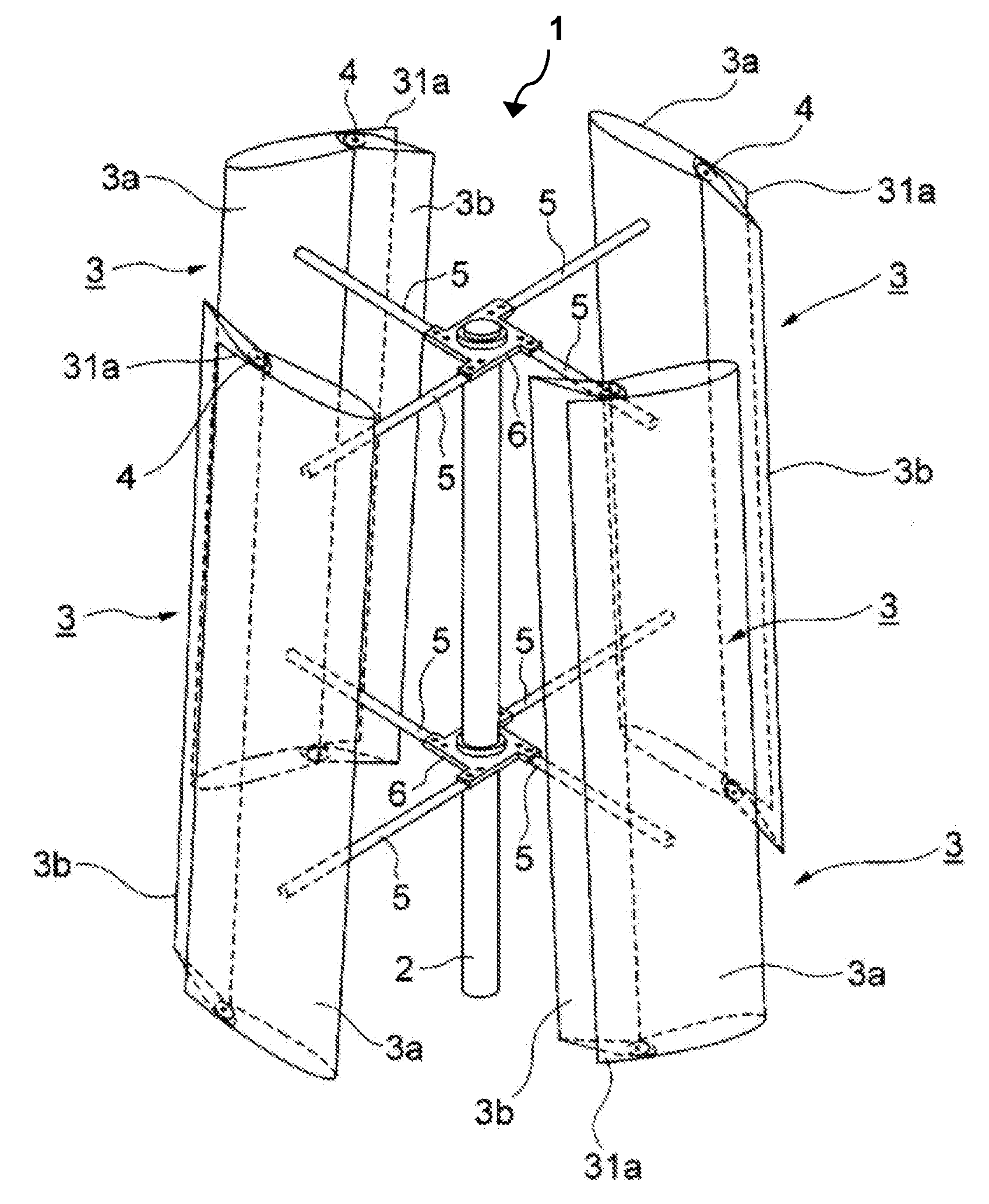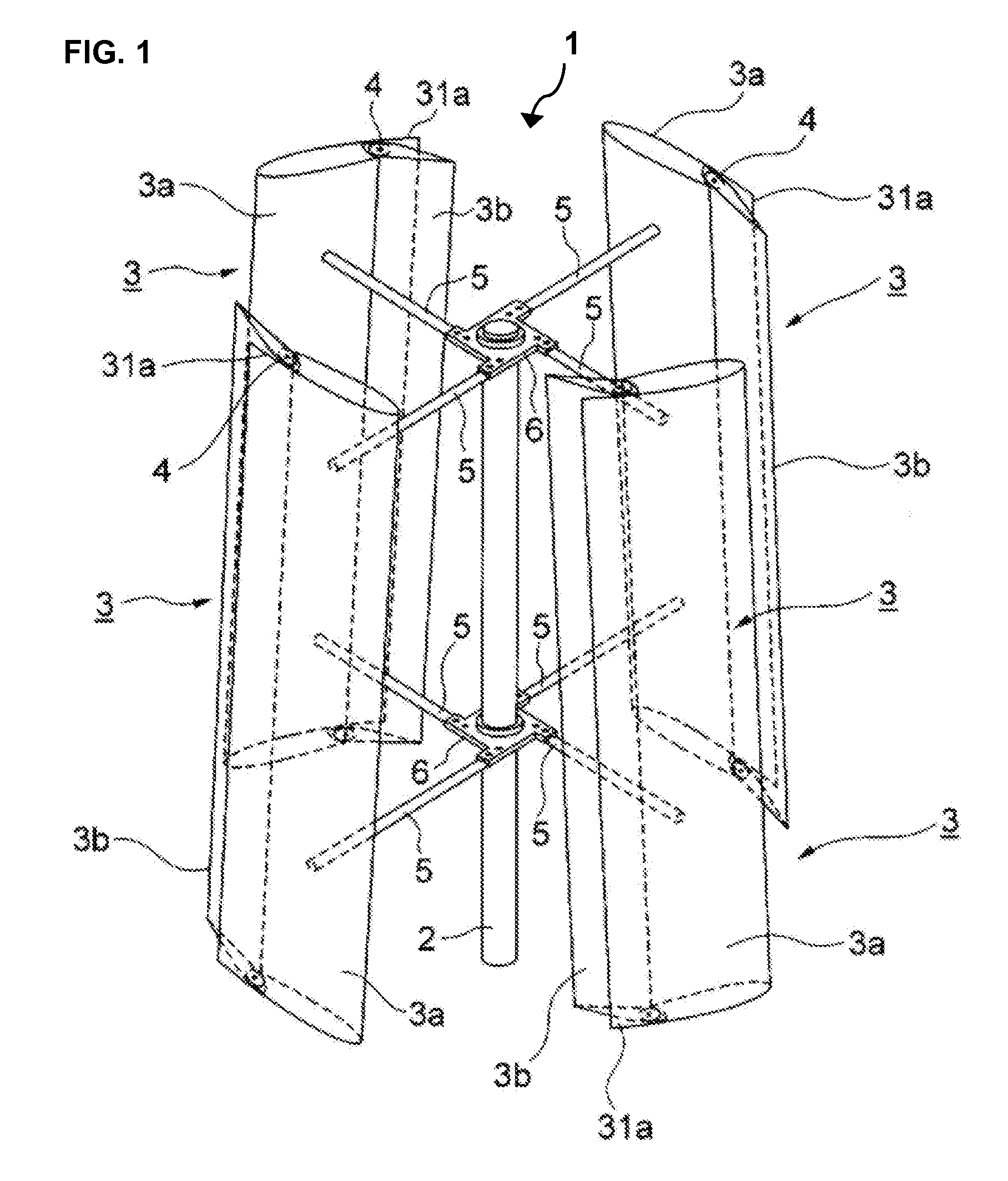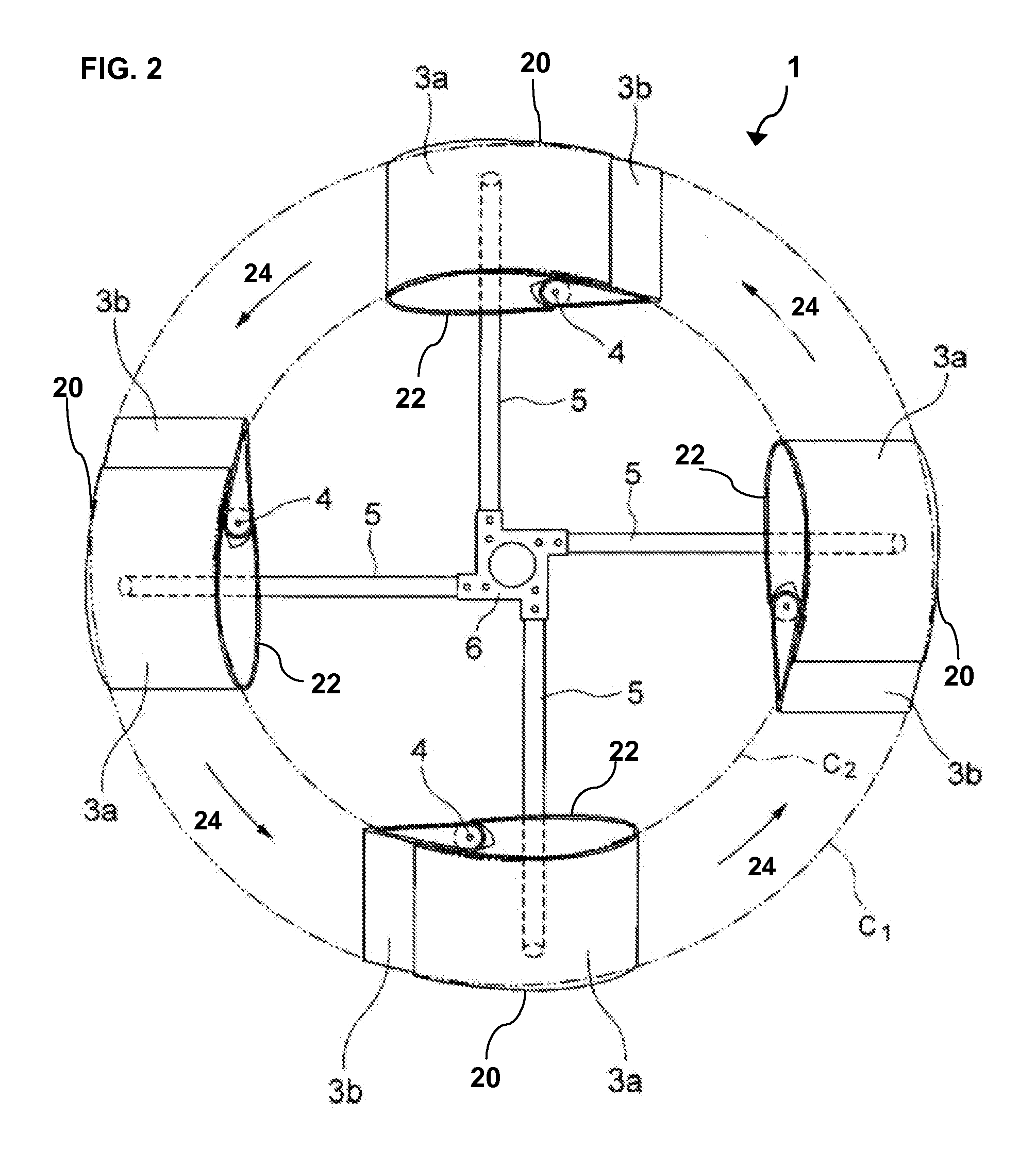Vertical Axis Windmill And Wind Turbine System For Generating Electricity From Wind Energy
a technology of wind turbines and wind turbines, which is applied in the direction of wind motors with perpendicular air flow, non-positive displacement fluid engines, liquid fuel engine components, etc., can solve the problems of limiting the power generation capabilities of wind turbines, the speed of the blade tip can exceed the wind speed, and the rotation of the wind turbine is limited, so as to achieve continuous rotation, efficient electricity generation, and the effect of reducing the pivoting movement of the rear portion
- Summary
- Abstract
- Description
- Claims
- Application Information
AI Technical Summary
Benefits of technology
Problems solved by technology
Method used
Image
Examples
Embodiment Construction
[0041]Like drawing numbers on different figures identify identical or functionally similar structural features of the invention. The invention is not limited to the particular methodology, materials and modifications described and as such may, of course, vary. The terminology used herein is for the purpose of describing particular aspects only, and is not intended to limit the scope of the present invention, which is limited only by the appended claims.
[0042]Unless defined otherwise, all technical and scientific terms used herein have the same meaning as commonly understood to one of ordinary skill in the art to which this invention belongs.
[0043]FIG. 1 depicts the overall structure of wind turbine 1, which is a wind turbine in accordance with the present invention. Wind turbine 1 is shown arranged with a substantially vertical rotating shaft 2 fixedly secured to four blades 3. Blades 3 include front portions or front blades 3a and rear portions or rear blades 3b. Front portions 3a ...
PUM
 Login to View More
Login to View More Abstract
Description
Claims
Application Information
 Login to View More
Login to View More - R&D
- Intellectual Property
- Life Sciences
- Materials
- Tech Scout
- Unparalleled Data Quality
- Higher Quality Content
- 60% Fewer Hallucinations
Browse by: Latest US Patents, China's latest patents, Technical Efficacy Thesaurus, Application Domain, Technology Topic, Popular Technical Reports.
© 2025 PatSnap. All rights reserved.Legal|Privacy policy|Modern Slavery Act Transparency Statement|Sitemap|About US| Contact US: help@patsnap.com



